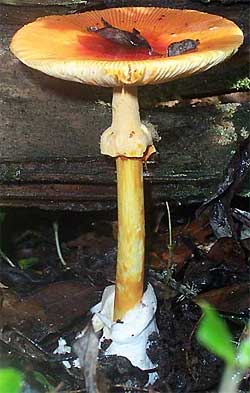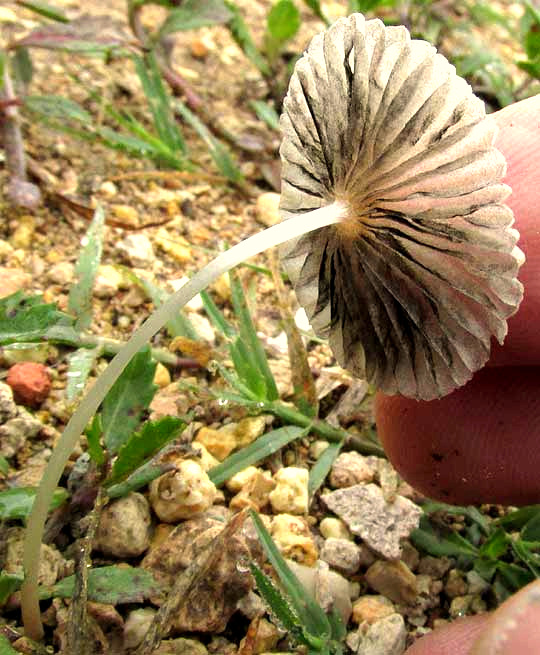
(SOURCE: NCBI database)
KINGDOM: Fungi
DIVISION: Basidiomycota
CLASS: Agaricomycetes
ORDER: Agaricales
FAMILIES: several
Gill fungi bear thin, papery gills on the undersides of their caps, seen at the left radiating from the stem's connection with the cap. At the left, gills of the Parasol Mushroom, Parasola plicatilis, are blackened because mushroom gills produce spores on their surface -- certain species releasing over 1,000,000,000 spores each day! However, if just one or two of those billions of spores germinate and eventually lead to another mushroom, they'll be lucky.
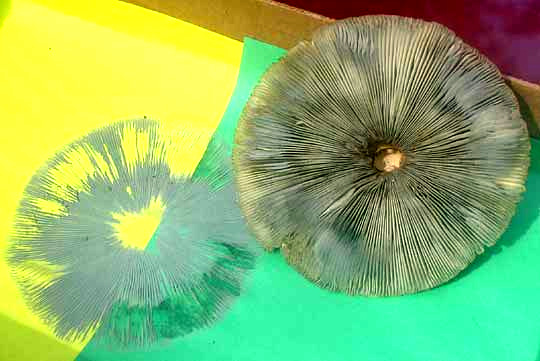
The Parasol Mushroom's spores are black, but spores can be of many colors, such as the dark gray ones shown at the right. There you see a "spore print" made by placing a mushroom cap on paper, gills down, when the gills were releasing spores. Spore color within each species is constant, so color is an important consideration when identifying gill fungi. Many spore colors are possible, though black and white may be the most commonly encountered.
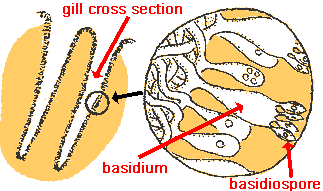
The diagram at the left shows how spores -- more technically called basidiospores -- are formed on each gills' surface.
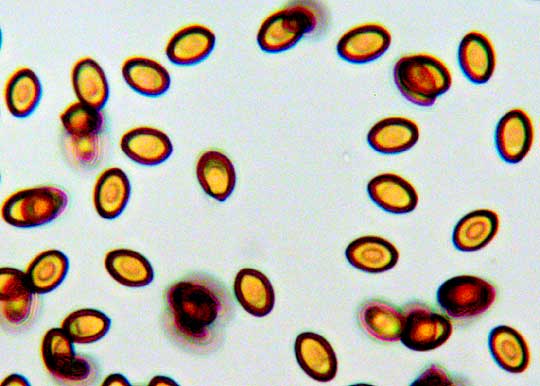
At the right a view through a microscopic shows spores produced by a Conocybe mushroom. Often a mushroom is so hard to identify with certainty that knowing the spore size and shape is very helpful.
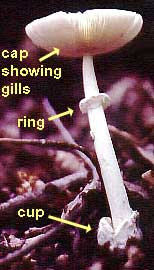
The "classic" gill fungus has an open-umbrella shape as shown at the left. That's the deadly poisonous Amanita verna, one of several mushrooms going by the quaint name of "Destroying Angel." Only a few gilled mushroom species possess both the ring (also called the annulus) as well as the cup (also called the volva). Sometimes a mushroom species arises from a cup but has no ring; sometimes it has a ring, but no cup, and; often it bears neither ring nor cup.
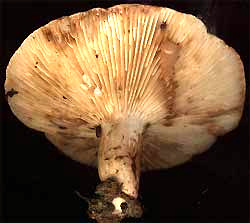
Though a few gilled mushrooms are toxic, a fair number of species are exceptionally good to eat. For example, the mushroom at the right is a member of the genus Lactarius. Members of that genus often are called Milk Mushrooms because when they are injured the fungus body "bleeds" a white latex or "milk," as shown by a cut across the gills in the photograph. In this species injured tissue turns brown, as the image also shows. Some species turn blue when bruised. This species' "milk" and brown bruises are good field marks helping us recognize the species.
Another reason people like gilled mushrooms is that they are so pretty, and somehow mysterious. Just feast your eyes on the famously edible Caesar's Mushroom, Amanita caesarea, below:
